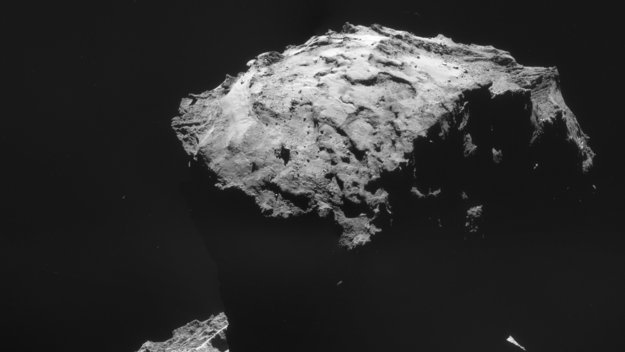
 The site where Rosetta’s Philae lander is scheduled to touch down on Comet 67P/Churyumov-Gerasimenko November 12 now has a name: Agilkia.
The site where Rosetta’s Philae lander is scheduled to touch down on Comet 67P/Churyumov-Gerasimenko November 12 now has a name: Agilkia.
The landing site, previously known as “Site J,” is named for Agilkia Island on the Nile River in the south of Egypt. A complex of Ancient Egyptian buildings, including the famous Temple of Isis, was moved to Agilkia from the island of Philae when the latter was flooded during the building of the Aswan dams last century.
The name was selected by a jury comprising members of the Philae Lander Steering Committee as part of a public competition run October 16–22 by the European Space Agency (ESA) and the German, French and Italian space agencies.
Agilkia was one of the most popular entries, proposed by over 150 participants. Although perhaps not quite as complicated as navigating Rosetta and Philae towards the comet, the task of choosing a name was by no means simple. More than 8,000 entries from 135 countries were received in one week, showing great creativity and cultural diversity.
Participants proposed names in a variety of languages, both ancient and modern; some were even in Esperanto. There were also some interesting acronyms, curious sequences of digits, and onomatopoeic words.
The entries covered a tremendous range of themes, from abstract concepts to the names of places on Earth. As with the winning entry, many suggestions echoed the Egyptian origins of Rosetta and Philae, named in recognition of milestones in decoding hieroglyphics, the sacred writing system of ancient Egypt.
Many names dated back to the history of our planet’s exploration, as those journeys into the unknown are the natural forebears of Rosetta and Philae. Mythological names from all over the globe were also proposed, including gods and goddesses of water, fertility, life and creation, relating closely to the fundamental themes investigated by the mission.
Other names were drawn from ancient history and prehistory, while others recalled milestones in the history of science, particularly the history of our understanding of comets.
The progress of the Space Age was also honored by many entries. There were many references to science fiction, celebrating the work of Jules Verne, Arthur C. Clarke and Douglas Adams, among others.
And, of course, there was no shortage of more humorous entries, many referring to the resemblance of the comet’s nucleus to a rubber duck, a potato or even the cartoon dog, Snoopy.
But the final choice was Agilkia, which is how the landing site on the comet will be referred to by ESA and its mission partners.
“And it couldn’t be a more appropriate name,” comments Fred Jansen, ESA Rosetta mission manager. “The relocation of the temples of Philae Island to Agilkia Island was an ambitious technical endeavor performed in the 1960s and 1970s to preserve an archaeological record of our ancient history.
“In eight days’ time, Philae will be deployed from the orbiter onto Agilkia. On 12 November, we’ll be attempting a unique comet landing, an even more ambitious endeavor to unlock secrets of our most remote origins.”
Rosetta will release Philae at 08:35 GMT/09:35 CET on November 12 at a distance of 22.5 km from the center of the comet, with a scheduled landing about seven hours later at Agilkia.


Be the first to comment